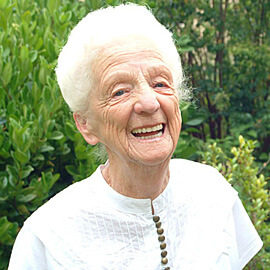We talked to Brisbane-based architect Ann-Maree Ruffles, Hames Sharley’s new Studio Leader in Queensland, about the coming trends in Retirement accommodation.
How has retirement living design changed in the past 20 years?
The dramatic increase in Australians over 65 is driving demand. This demand is not only for increased availability. The market has also been demanding a substantial increase in diversity, both in terms of housing types as well as community, lifestyle and wellness offerings.
The recent cohort of over 65s expects to feel part of a community with which they are authentically connected, in housing styles that are relevant to them and in which they feel pride. They expect an intergenerational approach to the community in which they live. They want their homes to feel connected with community, where family and friends of all ages feel pleasure and inclusion and relevance when visiting.
A one size fits all approach is not acceptable to new generations of over 65s coming through and they are shaking up the market. They are not accepting the current stock.
We’ve recently seen a shift to aging in place principals – away from an institutionalised and reactive care provision approach. This is evidenced in the interim report released from The Royal Commission into Aged Care and facilitated by the shift to a consumer directed care funding model. This has put the spotlight very firmly on the question: What is the place in ‘ageing in place?’
What are the major trends you’re seeing now?
We’re seeing a lot more diversity in location. We’re seeing an increase in urban locations and vertical living in conjunction with the existing suburban and rural models.
We’re finally seeing a less institutionalised approach across all models of retirement living. Rural and suburban models are increasingly less about affordability and more about a lifestyle choice. They are places where food can be grown, where pets can be kept as part of the family and the community, where life is lived, by choice, differently to the inner city more vertical models.
Inner city vertical models have only in recent years emerged. Aveo Newstead in Brisbane, Australian Unity’s Drummond Place in Melbourne and Adventist Care’s Australis at Rossmoyne in Perth which we (Hames Sharley) designed are great examples. What excites me about these communities is that they are intimately integrated into existing communities that have organically grown over time. I think this is having such a positive impact on reversing preconceptions about the elderly in Australia and combatting ageism.
We have seen an increase in designing ‘apartments and housing for life’, into which any level of care can be received, housing specifically suiting elderly unrelated individuals, housing where adult children with disabilities can reside with their elderly parents and vice versa.
International trends we’d love to see develop here are UBRCs (university or school-based retirement communities). These communities are born out of transitional thinking regarding retirement. In these communities, elderly residents are connected with the learning institution/s, sharing some facilities, studying, or perhaps continuing to teach as they have always done, treating retirement more as a phasing out rather than a full stop to employment.
Are there any design features you expect to emerge in the future?
I think the trends above will certainly continue to develop and grow, which is great.
Technology will play an increasingly significant role both in the general way we all connect with technology but also in terms of care, accessing medical assistance, contributing to reducing loneliness and isolation etc.
The increasing emphasis on ageing in place will drive not only new types of retirement villages but will also drive significant change in the fabric of our suburbs. Outer-lying suburbs in many regions of Australia are little more than dormitory suburbs, relatively lifeless during work hours and with a reliance on cars for connectivity with services and community.
For our Australian communities to become increasingly age equitable and inclusive, design outcomes will address both design of built form as well as social design. To this end, design teams will change significantly, with a shift to multi-disciplinary design teams including urban planners, town centre masterplanning specialists, landscape architects, public realm and placemaking specialists and architects.
As an architect, I have worked almost exclusively in designing living environments. My hope for the future is that we all approach designing for seniors as we would the design of any environment for living.
Photo: Ann-Maree Ruffles at far left






